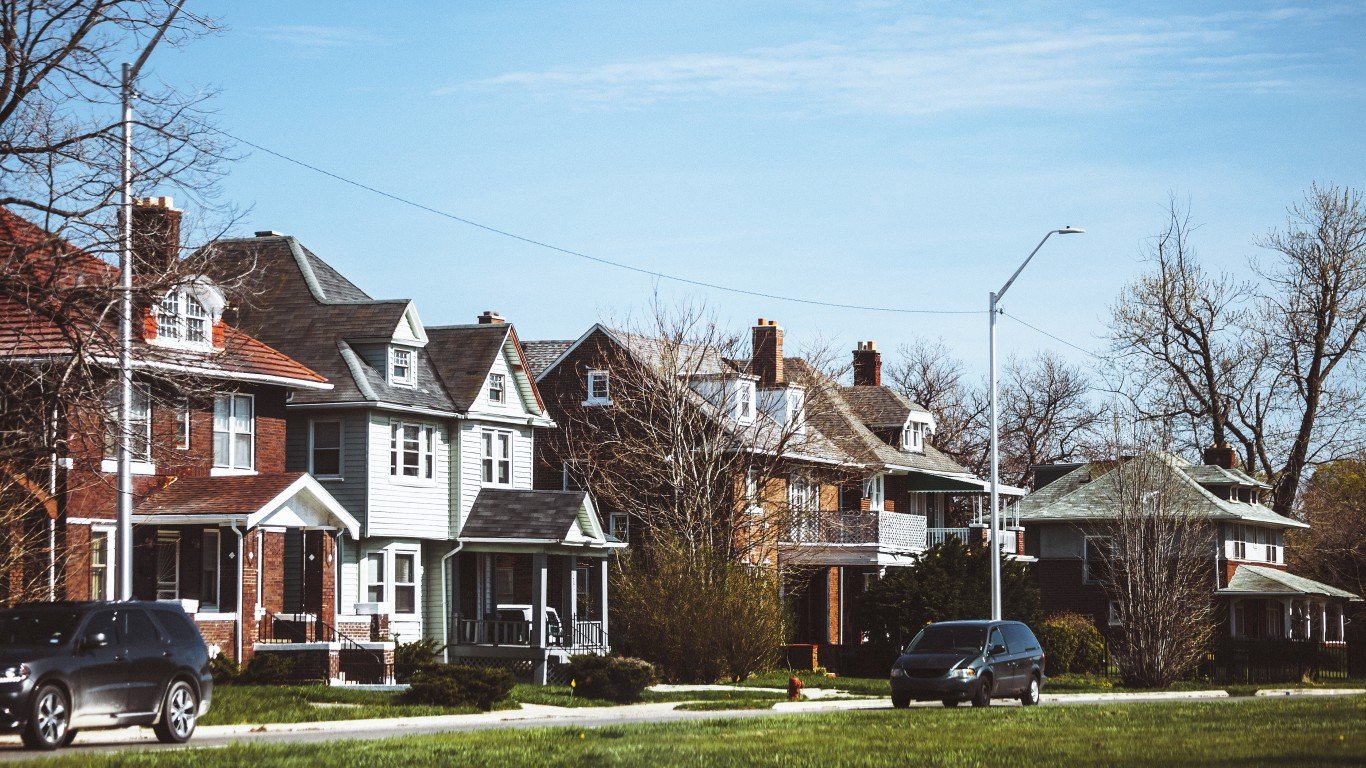

Home prices have stopped falling after several months of a downturn. According to S&P Case Shiller, the prices bumped up slightly in February. It is nothing like the run of increases that ran for almost two years, until late in 2022 when mortgage rates began to rise. However, it is at least a sign of hope. Across the 20 metros Case-Shiller measures with a base price from 2000, many markets have had extremely sharp increases in price. In a much smaller number, they have barely risen at all. (People are leaving these 11 states in droves.)
[in-text-ad]
U.S. home prices increased 0.2% month over month in February. Craig J. Lazzara, managing director at S&P DJI, commented “The National Composite, which had declined for seven consecutive months, rose a modest 0.2% in February, and now stands 4.9% below its June 2022 peak.”
In January 2000, when Case-Shiller started to measure its 20 metros, it gave each city a value of 100. This allowed its researchers to show price increases in each city over time. Some cities have values that have risen over threefold since then. Metros on the West Coast dominate this category. The index for San Diego is 384.83, and for San Francisco it is 329.79.
The metro with the smallest increase in value is Detroit at 165.08. Detroit was once the greatest industrial city in America, with a population and economy dominated by the car industry. Since 1950, its population has declined by half to about 700,000. The poverty rate is over 30%, which is among the highest in the country. There is no prospect for recovery. Cities adding people have populations with skills to draw companies and industries.
Thank you for reading! Have some feedback for us?
Contact the 24/7 Wall St. editorial team.
 24/7 Wall St.
24/7 Wall St.